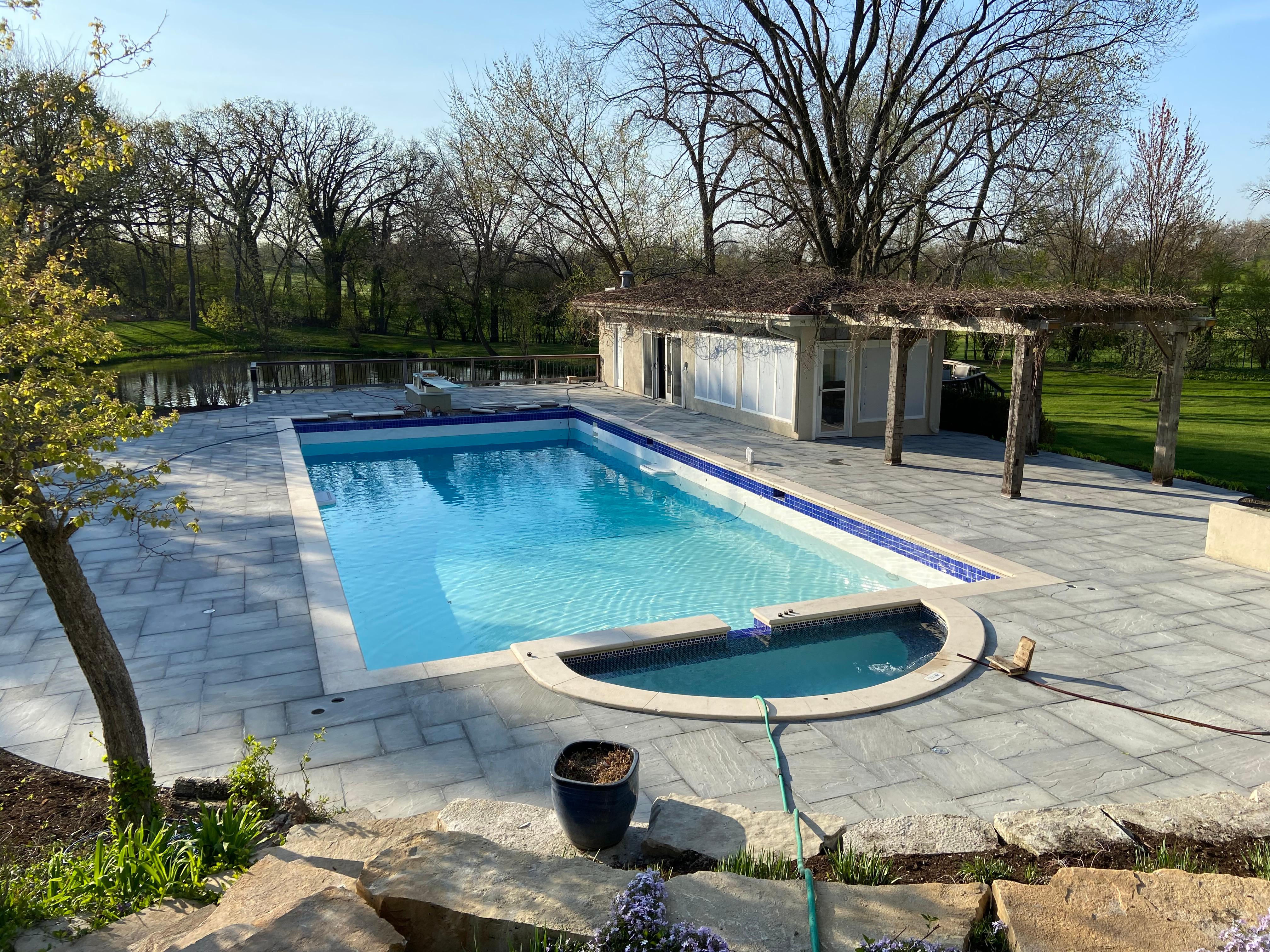The Swimming Pool Terminology All Pool Owners Must Know

Whether you’re a new pool owner or have had an inground pool at home for years, it helps to be fluent in pool lingo.
Why? For starters, it will help you better understand the work that your maintenance company does on your pool. It will also help you better understand how your pool works and how to best care for it yourself.
Below are some of the most frequently used terms that we consider important to know.
Weekly maintenance: Routine care provided to your pool that serves as the foundation for a healthy swimming environment. Weekly maintenance will vary depending on your pool, but services frequently include a water analysis, balancing pool water, cleaning of pump strainer, skimmer basket, cleaning of pool tile and patio area, and adding chlorine to the pool.
Pool opening: The steps taken to prepare a pool to be used after having been closed. Pool openings generally occur during the Spring season. Some steps frequently include:
- Cleaning the pool with acid or chlorine
- Installing fittings, baskets and other pool related items that were removed during the winter
- Restarting pool equipment for the season
Pool closing: The steps taken to prepare a pool to be out of use for the season. Pool closings generally occur during the Fall season. Steps frequently include:
- Draining water to the proper level
- Bowing out water from lines and equipment
- Removing fittings, baskets and other pool related items
- Shutting down the heater
- Balancing and shocking pool water.
Pool draining: Reducing the water level of a pool, often done prior to pool closing or renovation.
Algae: A plantlike organism that lives in water. Because it contains chlorophyll, it can grow quickly in the sun. Algae will often noticeably change the color of your pool water, most frequently making it green.
Alkalinity: The strength of alkaline substances in pool water. This is measured in parts per million (ppm); you should aim to have your water be between 80 ppm and 150 ppm. The lower the alkalinity, the easier it is to change a pool’s pH. If your alkalinity is too low or too high, unwanted side effects, including water becoming cloudy or damage being done to the pool structure, may occur.
Balancing: Maintaining the proper levels of pH, alkalinity and calcium hardness in pool water. This is achieved through the use of water balancing chemicals. This balance ensures your pool remains clean, healthy and safe to use.
Backwash: The process involved in cleaning a pool’s filter by reversing the flow of water through it.
Chemical feeder: Pool accessory which introduces chemicals (often chlorine) into your pool. Users insert the chemical into the feeder, after which the feeder releases the appropriate amount into the water until empty.
Filter: A tool that captures foreign matter in water to improve the cleanliness and hygiene of the pool. It is part of a larger circulation system of the pool.
Impeller: A component of a pool pump that allows water to be sucked in, driving the filtration process.
Liner: A protective layer placed over the walls and floor of a pool to help keep water within the pool.
Neutralizer: A chemical added to water to reduce the chlorination levels within a pool.
Oxidizer: Potassium monopersulfate that is used to shock a pool.
Shock: The process of cleaning a pool by way of adding an oxidizer that destroys algae and other bacteria within the water.
Turbidity: A measure of the amount of cloudiness in pool water caused by accumulation of foreign particles.
This list is just a starting point: if you ever have questions about your pool, your pool maintenance company should be more than happy to thoroughly explain what specific terminology means. If you’d like to talk more about how to maintain your pool, you can contact AAA Pool Service at (847) 499-6040 or info@aaapoolservice.com.
